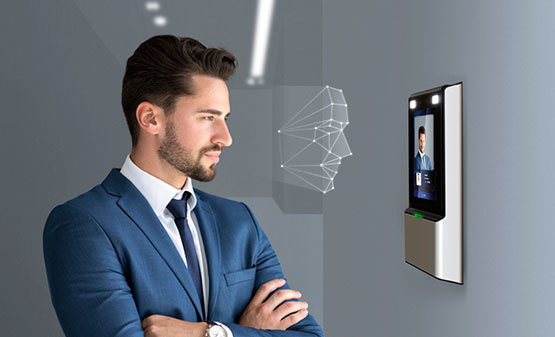2025-04-18
The Future of Home Automation: AI Smart Displays with Zigbee Integration
Table of Contents
- 1. Introduction to Home Automation and Smart Displays
- 2. Understanding Zigbee Technology
- 3. AI in Home Automation: The Game Changer
- 4. Benefits of AI Smart Displays with Zigbee Integration
- 5. Key Features of AI Smart Displays
- 6. Future Trends of Home Automation with AI and Zigbee
- 7. Challenges of Integrating AI Smart Displays with Zigbee
- 8. Conclusion: Embracing the Future of Home Automation
- 9. Frequently Asked Questions
1. Introduction to Home Automation and Smart Displays
Home automation has rapidly evolved from a niche segment into a mainstream necessity, transforming how we interact with our living spaces. With the advent of **AI smart displays** integrated with **Zigbee technology**, homeowners can enjoy unprecedented control and connectivity. These devices not only enhance convenience but also improve energy efficiency, security, and overall lifestyle. As we explore the future of home automation, it is essential to understand the role of AI smart displays and how Zigbee integration enhances their functionality.
2. Understanding Zigbee Technology
Zigbee is a wireless communication protocol designed for short-range connectivity, primarily in low-power applications. It operates over the **2.4 GHz frequency** and is favored in home automation for several reasons:
2.1 Low Power Consumption
Zigbee devices are energy-efficient, making them ideal for battery-powered applications. This characteristic allows smart devices to run for extended periods without frequent battery replacements.
2.2 Mesh Networking Capability
Zigbee's mesh networking allows devices to communicate with one another directly and expand their range. This means that even if one device fails, others can still relay signals, ensuring a robust and reliable smart home system.
2.3 Interoperability
Zigbee is designed to support a variety of devices from different manufacturers. This interoperability means that homeowners can mix and match devices, creating a customized smart home ecosystem that fits their needs.
3. AI in Home Automation: The Game Changer
The integration of **artificial intelligence** (AI) into home automation systems represents a significant advancement that enhances user experience. AI smart displays leverage machine learning algorithms to analyze data, learn user preferences, and automate tasks. This not only simplifies daily routines but also provides tailored solutions for every household.
3.1 Personalized User Experience
AI smart displays can recognize individual users and adapt their functionalities accordingly. For example, they can suggest personalized content, adjust lighting, or control temperatures based on each family member's habits and preferences.
3.2 Predictive Capabilities
By analyzing past behaviors, AI can predict future actions. For instance, if a user consistently turns on the lights at a certain time, the smart display can automate this process, enhancing convenience and energy efficiency.
4. Benefits of AI Smart Displays with Zigbee Integration
Integrating AI smart displays with Zigbee not only offers enhanced features but also provides a myriad of benefits for homeowners.
4.1 Enhanced Convenience
With voice commands and touch-sensitive displays, managing different devices becomes effortless. Homeowners can control lights, thermostats, security cameras, and entertainment systems from a single hub.
4.2 Improved Energy Efficiency
AI algorithms can monitor energy usage and suggest optimizations, such as dimming lights or turning off devices when not in use, leading to significant cost savings on utility bills.
4.3 Increased Security
Smart displays equipped with cameras and sensors enhance home security by allowing users to monitor their spaces remotely. Zigbee-enabled devices can trigger alarms or alerts based on unusual activities detected by AI algorithms.
4.4 Seamless Integration
Zigbee technology ensures that all smart devices in a home can communicate seamlessly, providing a cohesive experience. This interoperability allows for more complex automation setups, where multiple devices work in tandem.
5. Key Features of AI Smart Displays
AI smart displays equipped with Zigbee integration boast a range of features that set them apart from conventional smart devices.
5.1 Voice Control and Virtual Assistants
Most AI smart displays come with built-in virtual assistants, enabling voice control for various devices and applications. This hands-free operation enhances user convenience and accessibility.
5.2 Touchscreen Interfaces
The intuitive touchscreen interface allows users to navigate through different functions easily, browse the internet, or access smart home controls, making it user-friendly for all age groups.
5.3 Integration with Other Smart Home Devices
These smart displays can connect with other Zigbee-enabled devices, allowing for comprehensive home automation. Users can control everything from smart locks to thermostats through a single interface.
5.4 Enhanced Multimedia Functions
AI smart displays often double as entertainment hubs, allowing users to stream music, display photos, or watch videos. This multi-functionality enhances their value in the smart home ecosystem.
6. Future Trends of Home Automation with AI and Zigbee
The landscape of home automation is continuously evolving, with several emerging trends shaping the future of AI smart displays and Zigbee integration.
6.1 Increased Adoption of IoT Devices
The Internet of Things (IoT) is expected to proliferate, leading to a higher number of connected devices in homes. As more devices become Zigbee-compatible, the potential for automation grows exponentially.
6.2 Focus on Privacy and Security
As smart devices become ubiquitous, concerns about data privacy and security will shape their development. Future AI smart displays will likely incorporate advanced security measures to protect user data.
6.3 Enhanced User Interfaces
User interfaces on AI smart displays are expected to become more sophisticated, featuring advanced AI capabilities that offer proactive suggestions and simplified control options.
6.4 Integration with Renewable Energy Sources
As sustainability becomes a priority, integration with renewable energy systems, such as solar panels, will be a key feature in future AI smart displays, allowing for real-time energy management.
7. Challenges of Integrating AI Smart Displays with Zigbee
Despite the numerous benefits, several challenges exist in integrating AI smart displays with Zigbee technology.
7.1 Compatibility Issues
While Zigbee supports interoperability, not all devices are guaranteed to work seamlessly together. Ensuring compatibility among devices from different manufacturers can be an ongoing challenge.
7.2 Technical Complexity
Setting up a smart home system can be technically complex, especially for users unfamiliar with technology. This complexity may deter potential users from adopting AI smart displays with Zigbee integration.
7.3 Security Vulnerabilities
As with any connected device, smart displays are susceptible to hacking and data breaches. Continuous efforts are needed to enhance security protocols and ensure user data remains safe.
8. Conclusion: Embracing the Future of Home Automation
AI smart displays integrated with Zigbee technology represent the future of home automation, promising to enhance convenience, efficiency, and security in our daily lives. As we move toward a more connected world, these devices will play a crucial role in creating a seamless smart home ecosystem. By understanding the benefits, features, and trends associated with AI smart displays, homeowners can make informed decisions to embrace the future of home automation confidently.
9. Frequently Asked Questions
9.1 What is Zigbee technology, and how does it work?
Zigbee is a wireless communication protocol designed for low-power, short-range applications, allowing devices to communicate effectively in a mesh network.
9.2 How do AI smart displays improve home automation?
AI smart displays enhance home automation by providing personalized experiences, predictive capabilities, and simplified control of various devices.
9.3 Are AI smart displays secure?
While AI smart displays offer many benefits, they can be vulnerable to security breaches. It’s crucial to follow best practices for securing smart devices to protect your data.
9.4 Can I integrate devices from different manufacturers using Zigbee?
Yes, Zigbee is designed to support interoperability among various manufacturers, allowing users to create a customized smart home system.
9.5 What should I consider when choosing an AI smart display?
Consider factors such as compatibility with existing devices, user interface, security features, and the specific functions you need, such as entertainment or home automation control.
This comprehensive overview aims to provide readers with all the information they need about the future of home automation, AI smart displays, and Zigbee integration, ensuring a well-rounded understanding of this exciting technology.














